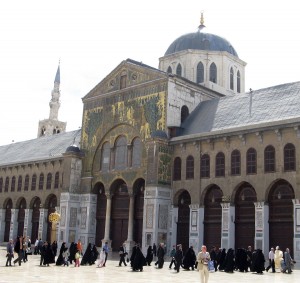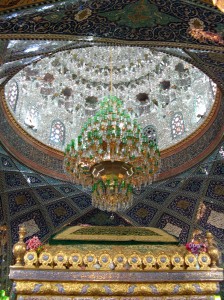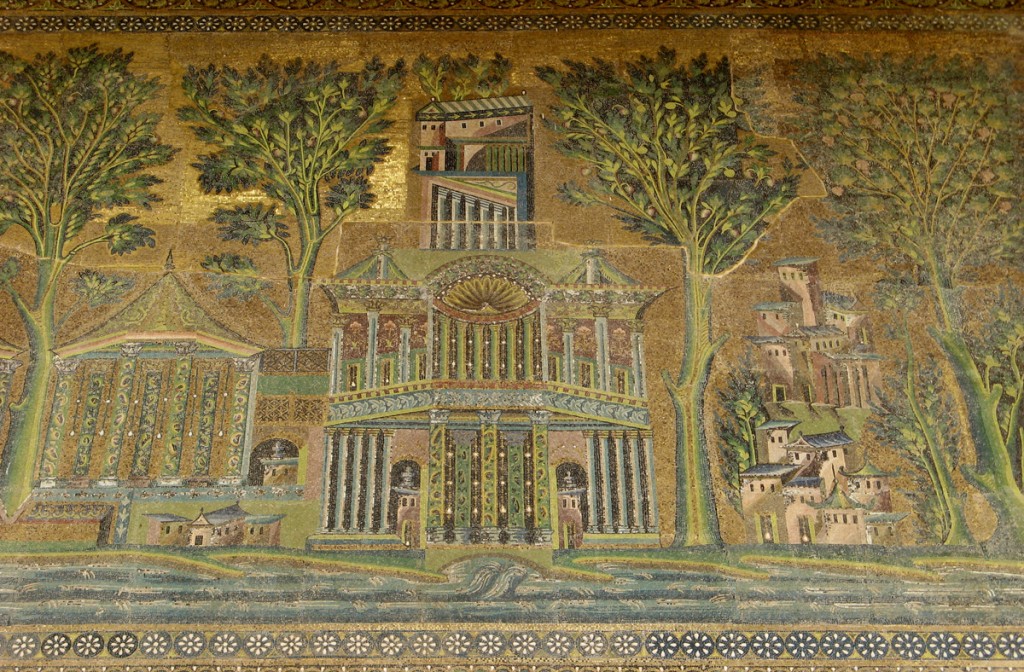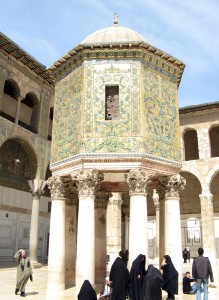Damascus’s Old City is very tourist friendly and it’s a pleasant place to wander. It’s mostly pedestrian-only and while the souks are fairly busy, the streets are mostly wide and it doesn’t feel too crowded. People say “welcome!” a lot. Mercifully, the many souvenir shop owners are only slightly pushy.
 There are two large contingents of foreigners in the Damascus Old City. First, there are many European tour groups, diligently photographing everything in sight. Second, there are flocks of Iranian pilgrims, with women in black chadors, towing their favourite mullah, come to visit important Shiite shrines. These two contingents briefly cross paths in the courtyard of the giant Umayyad Mosque, where they look somewhat baffled by each other (what are these strange people doing here?) before continuing their respective rituals.
There are two large contingents of foreigners in the Damascus Old City. First, there are many European tour groups, diligently photographing everything in sight. Second, there are flocks of Iranian pilgrims, with women in black chadors, towing their favourite mullah, come to visit important Shiite shrines. These two contingents briefly cross paths in the courtyard of the giant Umayyad Mosque, where they look somewhat baffled by each other (what are these strange people doing here?) before continuing their respective rituals.
I followed the Iranians to the nearby Sayyda Ruqayya Mosque, which contains the burial shrine of a grand-daughter of Ali. Her shrine seems to be particularly beloved by Iranian women. The mosque has been (re)built fairly recently, with Iranian money, and the interior is very splendid, ornately decorated with a glittering mirrored dome and giant crystal chandelier. The tomb itself is surrounded by a metal grill and many of the pious were dropping cash donations through the grill. These seemed to be almost entirely Iranian Rials, with the late Ayatollah Khomeini’s visage showing prominently on many of the banknotes.
The Umayyad Mosque itself is large and extremely interesting. It is one of the first of the great mosques, built in the early 8th century. It is thoroughly unlike the main mosques of Istanbul or Iran. There is no large dome. Rather there is large courtyard facing on to an extremely large prayer hall (restored after a 19th c. fire). The exterior of the prayer hall looks much more like a large church than a normal mosque, although inside it is oriented so the congregation is arrayed facing the long Southern wall (facing Mecca) rather than facing down the long axis, as in a church. To my great surprise, the courtyard and prayer hall exterior have many fine mosaics using a striking mixture of lush green and gold tones, depicting leafy plants and lush townscapes. This is (apparently) original. There are no humans or animals, but is much more naturalistic and representational than I have seen in any other mosques. Excellent.
The courtyard contains a strange little building (heavily mosaiced with greenery) perched atop eight tall pillars. Apparently this was the old public treasury. Rather than being hidden away, it obtains security by being very inaccessible yet in a very public place. Any additions or removals of money would require someone to bring both keys and a ladder and be very visible!


